The Adelaide highflyers helping NASA get back to the moon
Mankind is going back to the moon in the very near future. But not without the these South Australian trailblazers and stargazers.
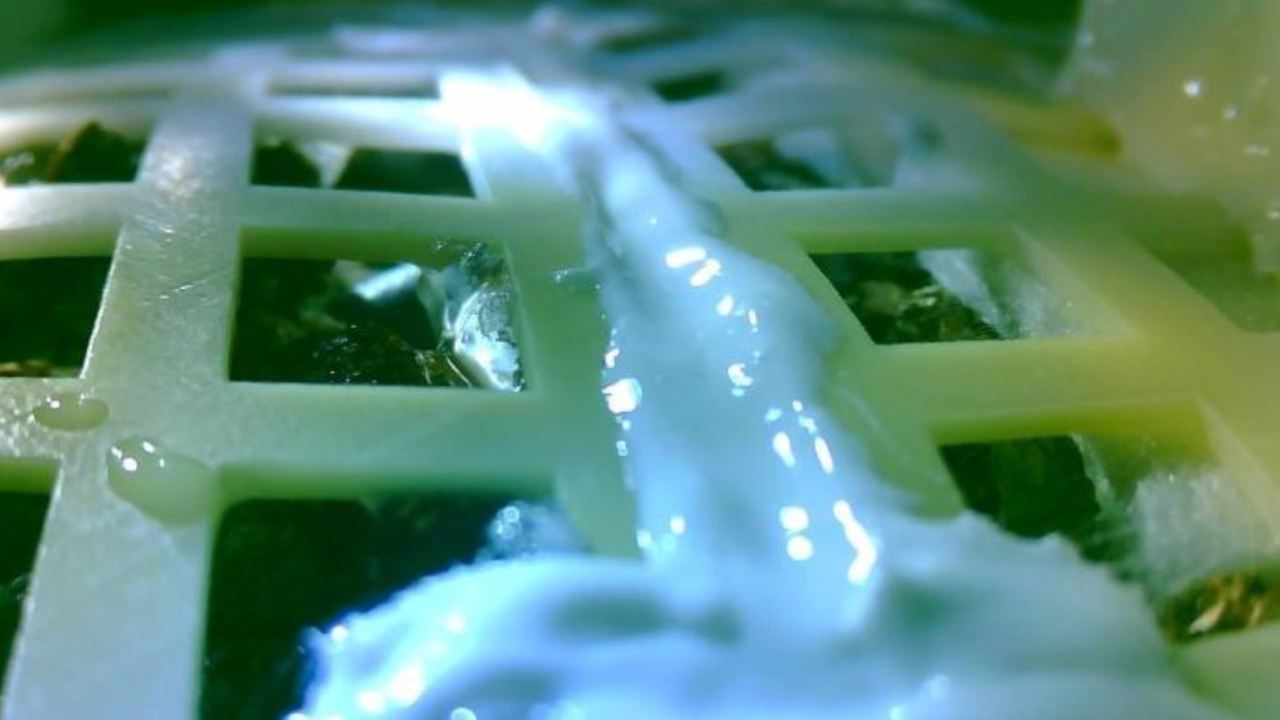
Lifestyle
Don't miss out on the headlines from Lifestyle. Followed categories will be added to My News.
It won’t be long until humans set foot back on the luna surface. Ahead of Tuesday’s Australian Space Forum in Adelaide, the Sunday Mail looks at how SA-based companies are helping make the historic mission a reality.
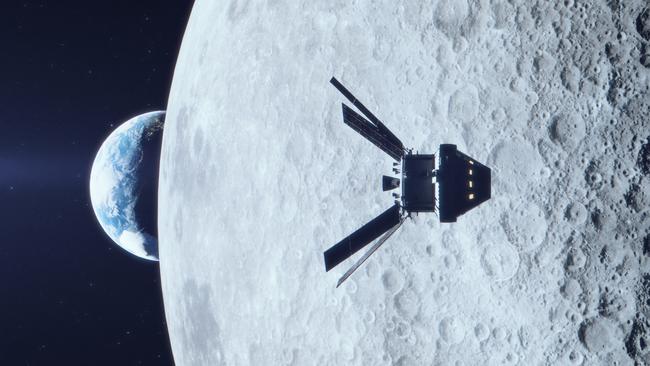
Adelaide’s moonshot
By Michael McGuire
A world gearing up to return humans to the moon and beyond is looking to Australia to play a central part in the mission, opening up opportunities for Adelaide companies to take advantage of an industry predicted to be worth $12bn by 2030.
The Australian Space Agency has created what it has called Team Artemis, to capitalise on NASA’s plan to have humans on the Moon by 2025 before establishing a base there and ultimately aiming for Mars.
Artemis (the Greek Goddess of the Moon) is the name NASA has given the missions to return to the lunar surface for the first time since 1972.
ASA chief technology officer Aude Vignelles said Team Artemis aimed to knit together all the best technologies Australia had to offer in the space field.
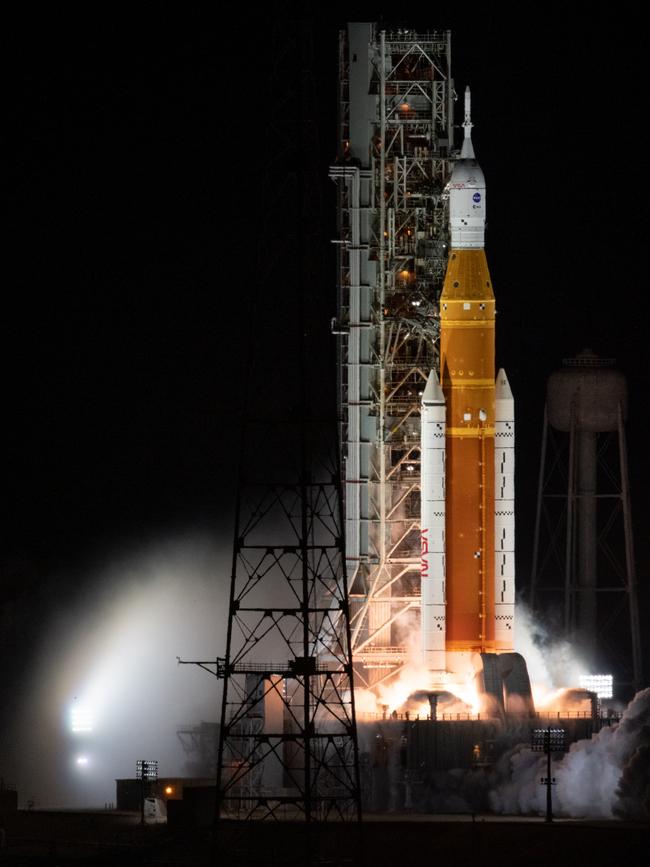
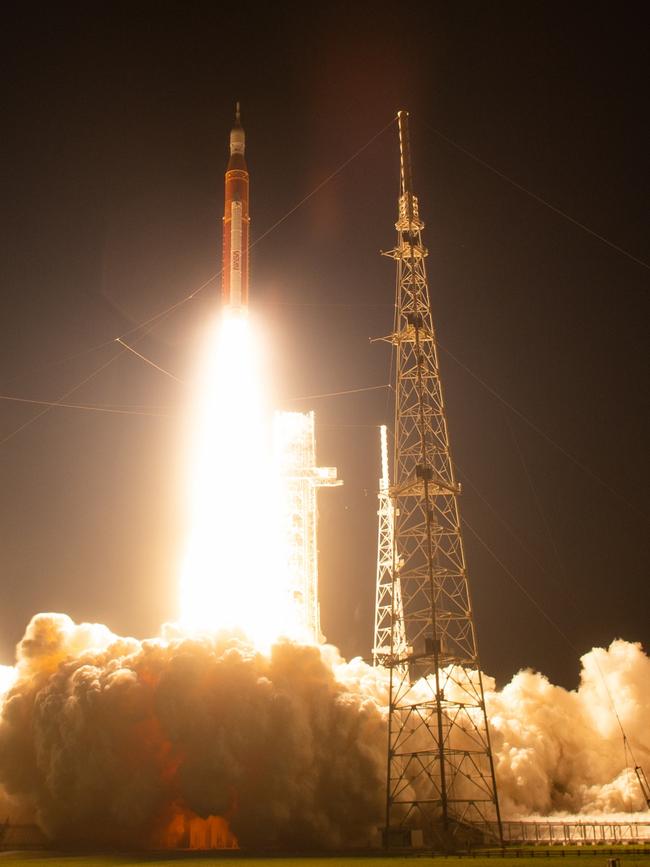
“Every state and territory has their own mission, their own objective,’’ she said.
“We need to glue all that with something so we can deliver a bigger outcome because you can’t do space alone. Space is the thing that unites everyone.’’
Last week, NASA refined what it calls its mission “architecture’’ into four priority areas: science; transportation and habitation; lunar and Martian infrastructure; and operations.
Ms Vignelles said the ASA had completed its own seven “national priority areas’’ and had already developed “roadmaps’’ on how to boost Australian industry and which would correlate with NASA’s objectives.
She said local companies such as the Lot 14-based Saber Astronautics, which designs spacecraft and operates a mission control program, were already well placed.
Saber already runs mission control operations for the BlueWalker 3 program, which is building a space-based mobile broadband network.
“We have a few that are ready for operation, like Saber,’’ Ms Vignelles said.
She also name-checked other Adelaide companies such as QuantX, which is developing a space-based atomic clock, Fleet Space, the Exterres lab which is mimicking the conditions on the moon, energy company entX and Silentium Defence.
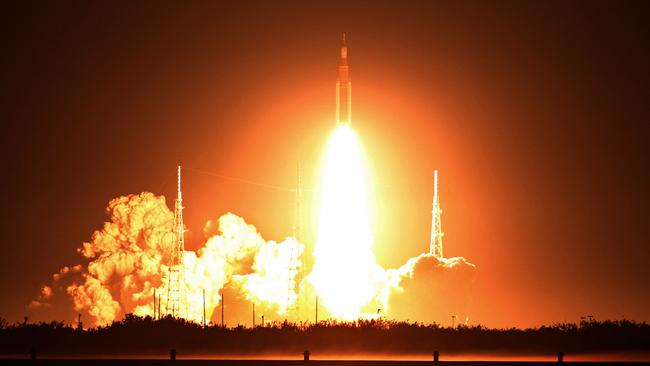
Ms Vignelles expressed enthusiasm for the Adelaide University-based Plants for Space research project, which is looking at ways to provide astronauts with food as well as materials and medicines.
In March, it was announced South Australian companies, including Nova Systems, were part of consortiums that had won a $4m grant to develop a lunar rover that will be part of the Artemis mission.
Ms Vignelles said Australia’s geographic position in the southern hemisphere was also an attraction.
“We really want to show to the world that we can be the preferred partner in the southern hemisphere,’’ she said. “The whole world is very interested in having a partnership with Australia because of that. But also because we’re a friendly country, we’re a stable country.
“I think the main challenge we’re going to have in the future is to say no to some people, because we can’t do everything that people want us to do.’’
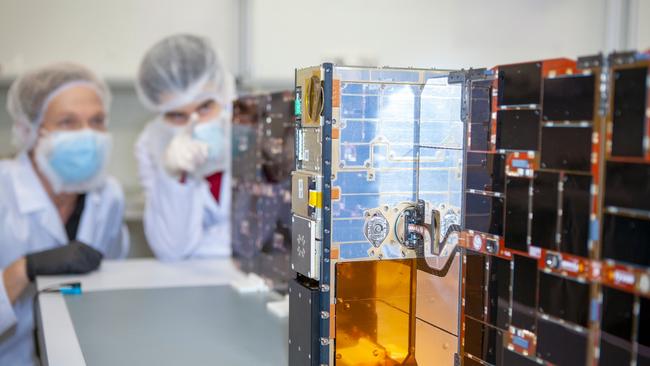
Digging deep to map our celestial neighbours
By Riley Walter
Technology being used to map the Earth’s subsurface and find valuable stores of minerals could soon be used to survey the moon and Mars, the head of one of Adelaide’s leading space agencies says.
Fleet Space Technologies co-founder and chief executive Flavia Tata Nardini says the company is on the precipice of transferring its surveying technology, used to identify prospective mines across the world, to outer space.
“We are working very closely with NASA … to design a mission to start bringing these technologies to the moon and Mars,” she said.
“We have demonstrated in the past couple of years that we can map the entire Earth … and our goal is to do it on the moon and Mars.
“I don’t think it’s that far off.”
Fleet Space uses devices to create a 3D map of the Earth’s subsurface before the survey results are sent to the companies satellites and relayed to clients.
“Usually these critical mineral deposits take years to find; we find them in months,” Ms Nardini said.
The technology Fleet Space deploys allows stores of valuable minerals, including lithium, to be located without a single hole being drilled.
“These are very environmentally friendly technologies,” she said.
Ms Nardini, who started the company with just three employees, said technology would go a long way to researching the potential for humans to live in space.
“There’s going to be a massive element of resources,” she said.
“This is clever data technology that allows you to know exactly where a deposit is.
“That will allow us as humankind to go to a planet without going and drilling everywhere. That is cool.”
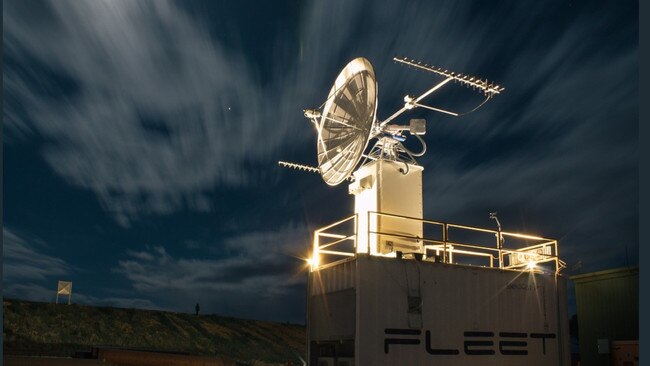
Ms Nardini said space companies like hers, which were once small start-ups, were leading the way in the industry.
“Last year we had this incredible growth, not just in terms of people, but in terms of revenue,” she said.
“It’s important to talk about how all this investment and effort around the space community is actually starting to pay off.
“The government is more and more understanding that space technology really helps other economies.”
Ms Nardini said using the new technology in innovative ways had made Australia a world leader in the industry.
A safer way to stay hot in space
By Rebecca Whitfield-Baker
An Adelaide “clean energy” company has developed a unique heater unit to be used in space.
Developed by entX Limited, the radioisotope heating unit (RHU) is designed to keep critical operating systems warm in the extreme-cold conditions of the moon and deep space.
It is what fuels the system that sets it apart.
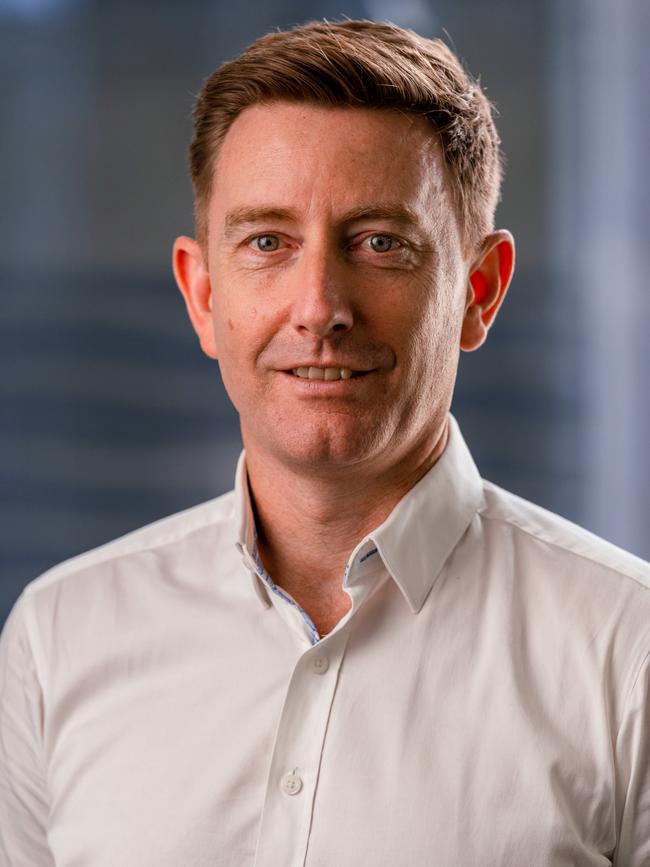
“Traditional RHUs ... use plutonium as a heat source which is extremely costly to make and restricted in its use due to safety and non-proliferation concerns,” entX Limited managing director Bryn Jones said.
“(Ours) use an alternative proprietary-engineered isotope which is safer and more cost effective ... (and will be) accessible to private space companies due to the lack of any proliferation concerns.
“(We’ve) modelled a range of worst-case scenarios for catastrophic launch failure where an RHU is on-board.”
Mr Jones said the technology was developed as part of an Australian Space Agency grant scheme aimed to build local supply chains for critical space components.
“RHUs will be critical in lunar occupation and exploration ... to have one of (ours) on an Australian-led mission to the dark side of the moon would be a source of immense pride for the whole team – it’s a real once-in-a-career sort of thing,” he said. Mr Jones said it was exciting to play a part in Australia’s growing space industry.
“(We) believe the culture of innovation and collaboration in South Australia makes it the ideal place to base a company like entX,” he said.
“SA produces some of the finest graduates in the world from STEM programs ... working with the Future Industries Institute at UniSA has enabled us to move at a very rapid pace.”
The company’s space and defence manager, Scott Edwards, said it was imperative for the state to stay at the forefront, planning for future space exploration.
“It’s vital that as we head toward a period where we’ll witness a rapid increase in lunar missions, that we have a ready supply of thermal energy solutions,” Dr Edwards said.
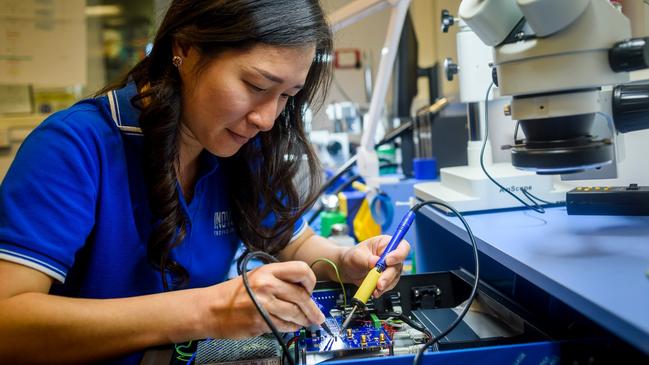
Our one-stop shop to put satellites into orbit
By Rebecca Whitfield-Baker
A South Australian aerospace company is setting new global standards in the design and construction of satellites but has its sights firmly set on even bigger things.
Inovor Technologies founder Matthew Tetlow is determined to showcase to the world the sheer scope of high-level technical expertise stationed in Australia – and SA specifically.
“(We have) serious technical people here … the workforce in Australia is so smart, the education system is so strong, we have some of the best people in the world,” Dr Tetlow said. “Things can – and do – get done here.”
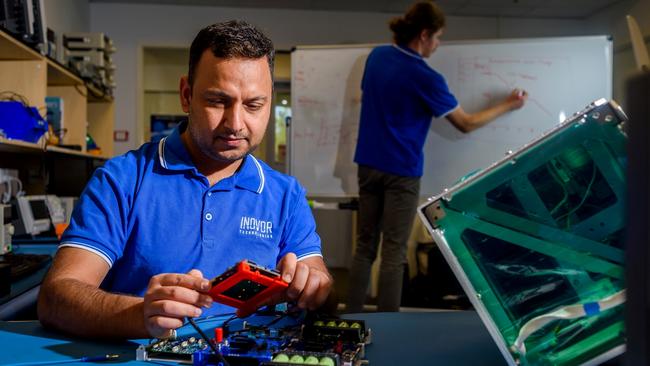
Established in 2015 as a defence business, the wholly-Australian owned and operated company now offers satellite mission solutions, recognised in the initial stage of the Australian Space Agency’s $150m Moon-to-Mars initiative which aims to get more local technology to the moon and beyond.
“About seven years ago we got into small satellites … we decided to completely build the system ourselves,” Dr Tetlow said. “So we have designed our own system with the entire satellite manufactured locally … (including the) primary structure, power system, pointing system, the ability to command, task it and collect data.
“It is actually quite rare globally to have somewhere that is fully vertically integrated like us.”
Dr Tetlow said it was at times frustrating local governments looked offshore for technology and skills, when homegrown options were available. “Manufacturing is important but Australia needs to focus on the brain part; we now need to see SA space technology being procured given the talent we have here,” he said. Dr Tetlow said a planned new multibillion-dollar Australian defence satellite communication system to be delivered by US-based Lockheed Martin Australia (LMA) offered “big opportunities for Australian companies”.
“We’re proud to partner with (LMA) to support its Hosted Missions Program … (it) will see us developing really novel support technology for these satellites; free-flying satellites that fly around and do other things in support of that primary mission,” he said. “Moving forward the government has to make the right decisions … the rhetoric – the words – are all right but it now has to materialise into, ‘we will use local industry’.”
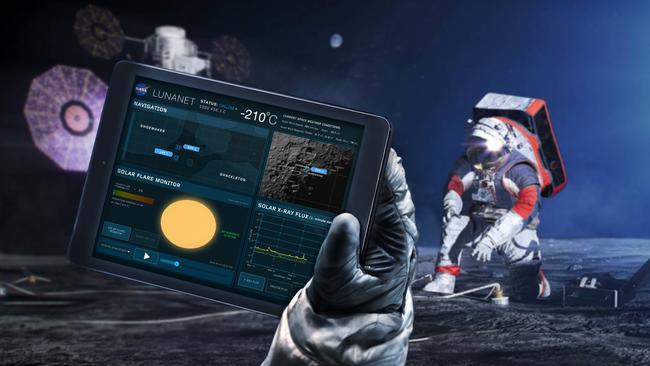
Two-way comms a potential lifesaver
By Riley Walter
The “next generation” of technology allowing two-way communication between stranded hikers or walkers and emergency services is being developed by an Adelaide research centre and NASA to improve search and rescue devices.
Adelaide research and development consortium SmartSat Cooperative Research Centre is working with the global space giant to create a device that will allow people in an emergency without phone service to send a distress signal with their exact location and be alerted when emergency services have received their calls for help.
The technology would tap into the Cospas-Sarsat system, an international satellite-aided search and rescue system, and allow users to carry a small beacon device similar to a mobile phone to be located if they become lost or injured.
SmartSat chief executive and managing director Professor Andy Koronios said the technology would be an improvement on existing tech which only sent a one-way signal, leaving a person in an emergency unsure if help was on the way.
“The problem with it, is it’s only one way,” Professor Koronios said of the 50-year-old technology.
“You don’t know if someone has received it so you’re stuck there not knowing whether help is on the way, but equally on the other end, they don’t know what the nature of your problem is, they just basically receive a signal from a particular area.”
The signal on the device would be strong enough to be captured if someone was stranded in a gully or ravine, Professor Koronios said.
SmartSat has been working with NASA on the technology for the past two years, as well as partnering with the Australian Maritime Safety Authority on the project. NASA is exploring the technology’s use in the moon’s craters.
“An astronaut could get in trouble on the moon and have no way of actually contacting the emergency command module on the moon,” he said.
“It’s very exciting for an Australian organisation to be working with NASA.”
Plants in space
The ability of humans to produce food and medicine in space has long been the domain of Hollywood (think Matt Damon in the 2015 film The Martian), but an Adelaide-based consortium plans to turn the concept into a reality.
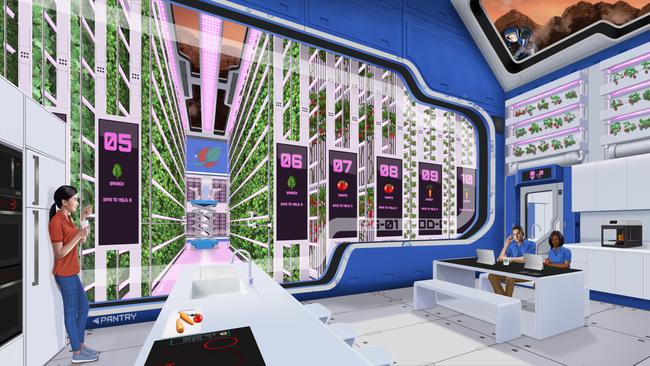
Plants For Space was established last year as an Australian Research Council Centre of Excellence and aims to focus on finding ways to provide the next generation of space explorers with food, materials and medicines.
The program, spearheaded by Adelaide University, hopes to run its first plant-based experiments out of the International Space Station by the end of next year. NASA is a key partner of The Plants For Space program, which also hopes to play a key role in NASA’s Artemis mission to return mankind to the moon in the second half of the 2020s.
Program director Matthew Gilliham said researchers in Adelaide were already working towards developing production techniques in closed environments for certain plants. “We are working on being able to grow plants very efficiently in vertical farming scenarios and produce food from plants that have very little waste or zero waste,” Mr Gilliham said.
“So we get students working on optimising the type of crops that can be grown … well beyond the lettuces and microgreens that’s common for these kinds of environments at the moment.”
The Plants For Space team was part of a Tasting Australia event in Victoria Square this week that featured duckweed – the fastest-growing edible plant on the planet. Researchers are also working with plants with edible stems such as strawberries and tomatoes.
“We are looking to see how our innovations will integrate into the return to the moon and having a presence there,” Mr Gilliham said.
“Initially, it will be a supplemental production of nutrition, but if we’re going to Mars, well have to move beyond supplemental and become the major source of nutrition, because it’s a nine-month trip.
“We won’t be able to rely on resupply and we’ll have to be able to provide their demands for medicines and the like.”
Preventing space traffic jams
The public theatrette at the Australian Space Discovery Centre at Lot Forteen offers patrons direct insight into a Saber Astronautics’ mission control centre.
It’s from here the company’s operators control multitudes of spacecraft and monitor space traffic, ensuring there are no close calls in an increasingly crowded environment.
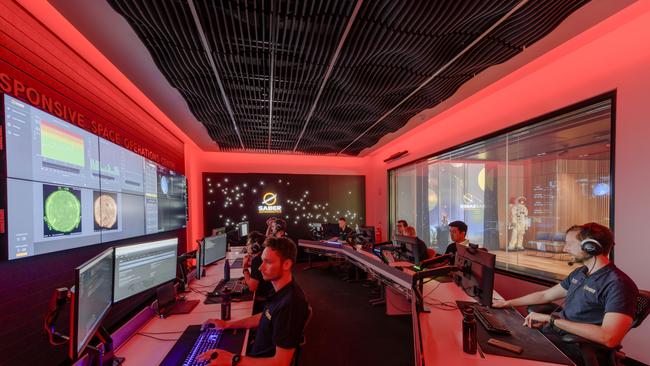
Saber Astronautics is celebrating its 15th year in operation but chief executive Jason Held and national director Andreas Antoniades moved from Sydney to Adelaide last year to be part of the city’s growing space ecosystem.
The company has a mission control centre in Adelaide and another in Boulder, Colorado. It partners with the Bureau of Meteorology’s space weather team, the ADF’s Defence Space Command and various space bodies in the US.
“We co-ordinate space traffic management, including some global space traffic exercises (joint commercial and defence) on behalf of the Asia-Pacific region,” Mr Antoniades said.
“I don’t know the exact number but there are tens of thousands of active spacecraft up there, all owned by different countries.
“It’s really, really important that we understand where they are going to be with as much notice as possible so that we can, if something is getting too close, take actions to make sure it’s not a collision.
“The more we can communicate with each other, as a planet, the more we can get closer to what we have now with air traffic control and air traffic management, which is a very mature thing that doesn’t exist for space at the moment.”
Saber Astronautics mission is the democratisation of space, reducing barriers to space flight and making space as easy as driving a car.
Mr Antoniades said the space mission management and operations company prided itself on an extensive internship program and would soon open new offices in Lot Fourteen.
Roadside assist
Rajat Kulshretha has a vision that Space Machines Company can become the RAA or NRMA of space, offering the equivalent of roadside assist service for satellites.
The CEO and co-founder of the in-space transportation and logistics start-up is focused on building infrastructure that will enable his staff to inspect and ultimately trouble-shoot satellites from their Adelaide mission operations centre.
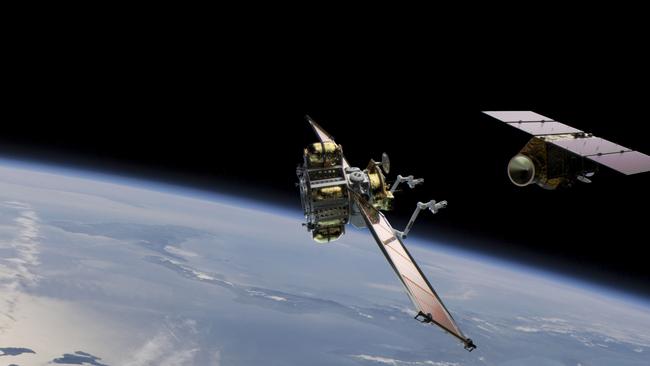
Space Machines Company will launch its first orbital transfer vehicle Optimus on a SpaceX rocket in January, and then plans to launch three and eventually have a fleet of four spacecraft to help customers manage their satellites in space.
“Rockets themselves have started getting cheaper and it’s getting very, very cheap to get to orbit,” Mr Kulshretha said.
“What was missing was the last mile in space – once you get there the costs are so high to get exactly where you want to go.
“So Space Machine’s key thesis was, let’s build infrastructure, let’s build transportation and servicing infrastructure so once satellites get into orbit, they can be repaired, repositioned, and relocated.
“So we’re building a platform that almost provides roadside assistance for space.”
The Space Machine craft, assembled in NSW, is compatible to launch with a variety of large rockets. The company’s initial launch already has six customers whose smaller satellites will be strapped to the Space Machines craft, which will then drop them into their orbit paths after it is released from the rocket.
The Space Machines work will initially focus on transporting satellites before moving on to inspecting, repairing and, ultimately, removing them from circulation.
The company launched its operations hub in Lot Fourteen in Adelaide this week and is in the process of hiring operators in preparation for January’s launch.
SA’s chorus line to the world
Revolutionary technology developed in Adelaide has the potential to be a game changer in military communications, proponents say.
Adelaide consortium SmartSat Cooperative Research Centre will next week unveil a prototype terminal that can receive both traditional radio frequency (RF) satellite communications and optical data – similar to the data transferred by fibre-optic cables in the National Broadband Network.
The unveiling of the terminal, labelled Compact Hybrid Optical-RF User Segment (CHORUS), comes after three years of research by Australian-based industry and university groups.
SmartSat chief executive Andy Koronios said the technology had the potential to put Australia in a lead position in a new class of military satellite communication devises.
“With the current geopolitical environment, our allies will be very, very interested in this type of technology, because it will allow them to have higher bandwidth transmissions, lower observability and more secure and resilient communications,” Professor Koronios said.
“This is world-leading technology that embeds the radio frequency as well as the optical communications in one terminal.
“The current problem when it comes to military communications is they are all pretty much radiofrequency and are very, very vulnerable to electronic warfare, jamming, geolocation and interception because they are very wide signals.
“So what we have done is we’ve taken the limitations or RF as well as the advantages, and the limitations of optical as well as its advantages and we’ve merged them together.”
Professor Koronios said the CHORUS terminal was essentially a hybrid optical-RF system that integrated an RF antenna dish with an optical telescope.
SmartSat will unveil the CHORUS terminal at The Andy Thomas Foundation’s 15th Australian Space Forum at Adelaide Convention Centre on Tuesday.
Paul Ashenden
More Coverage
Originally published as The Adelaide highflyers helping NASA get back to the moon




